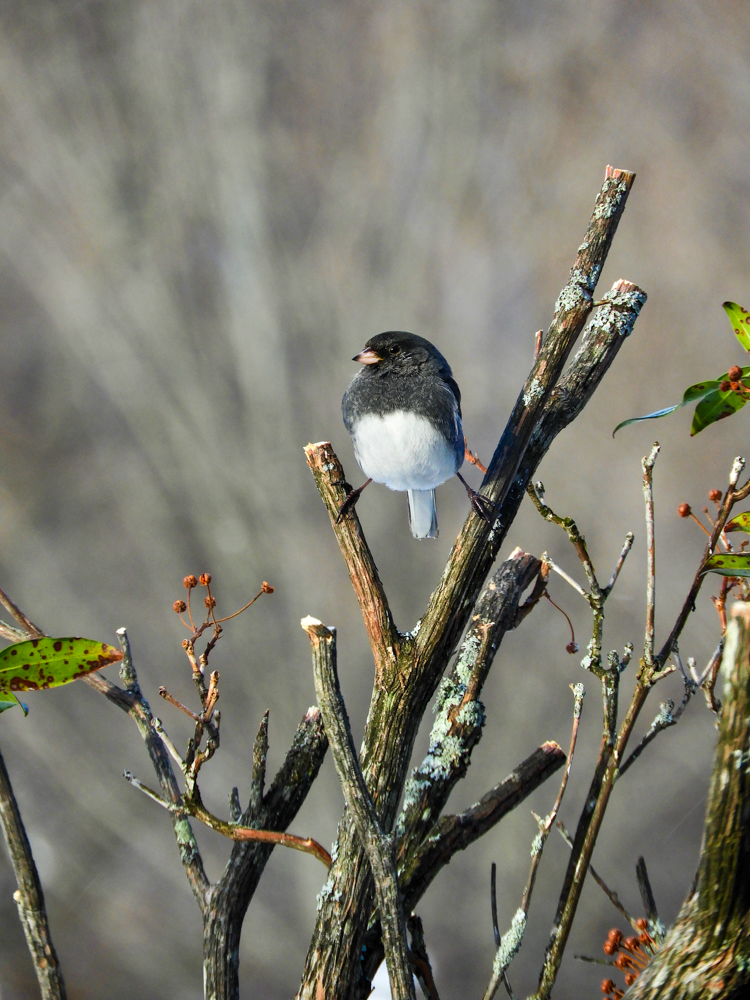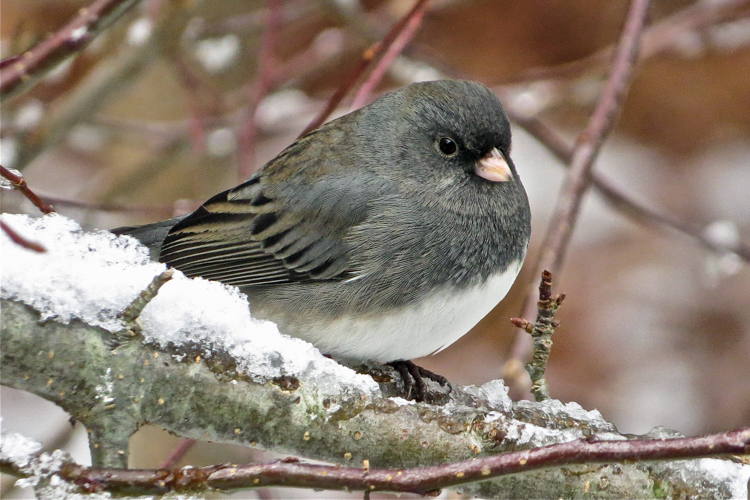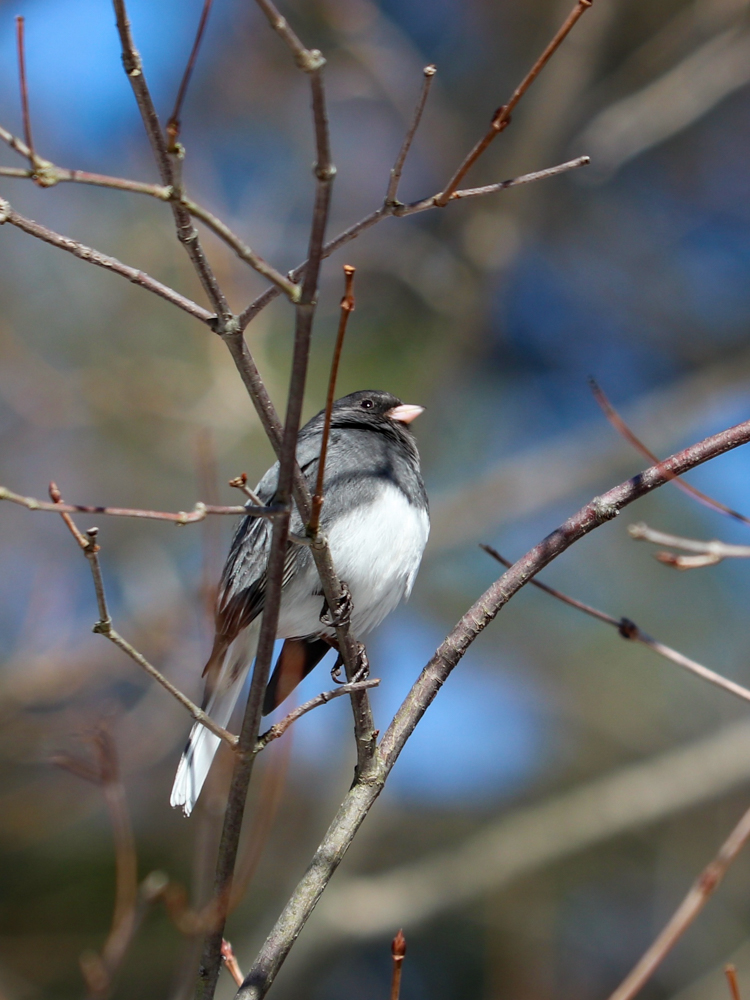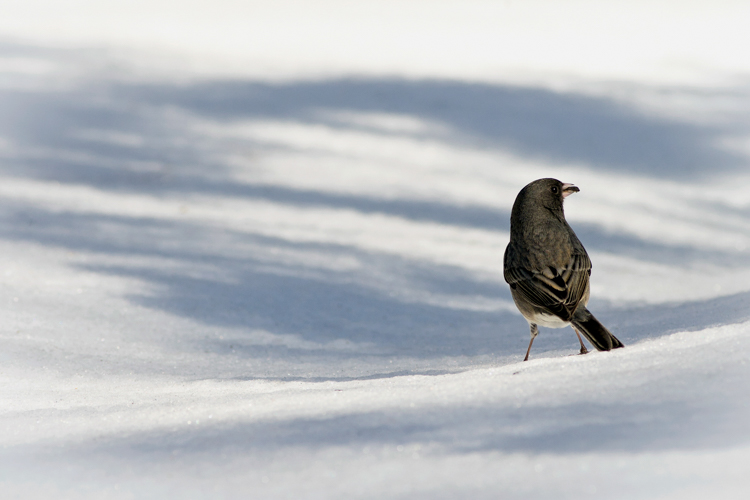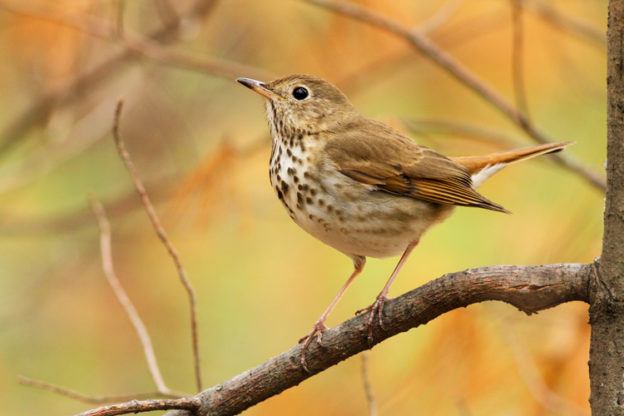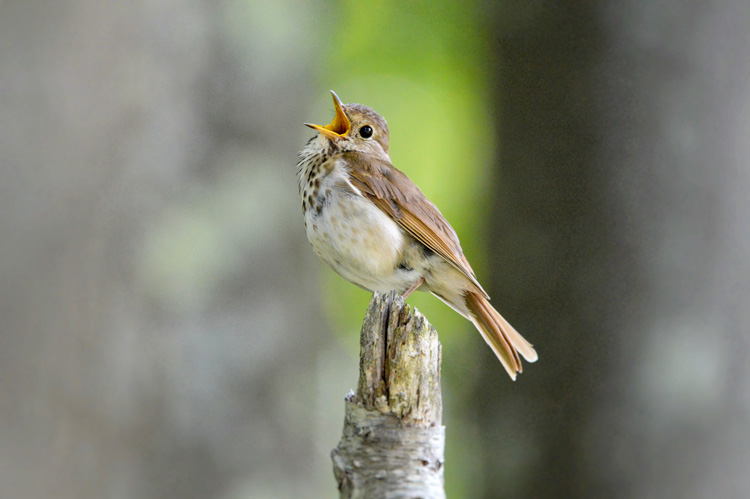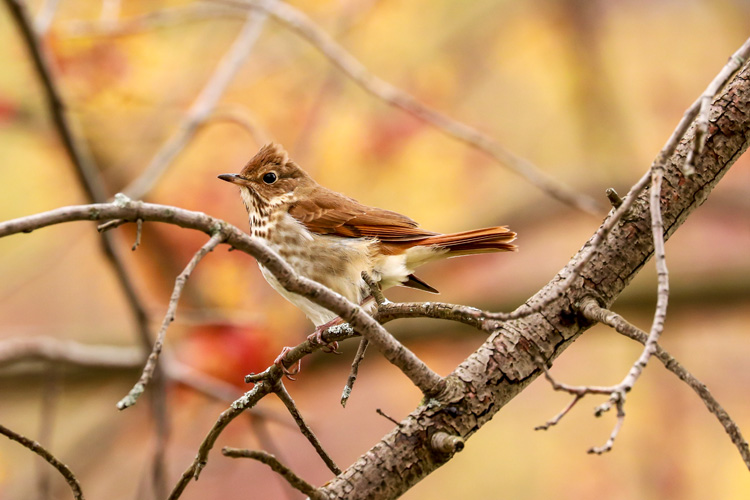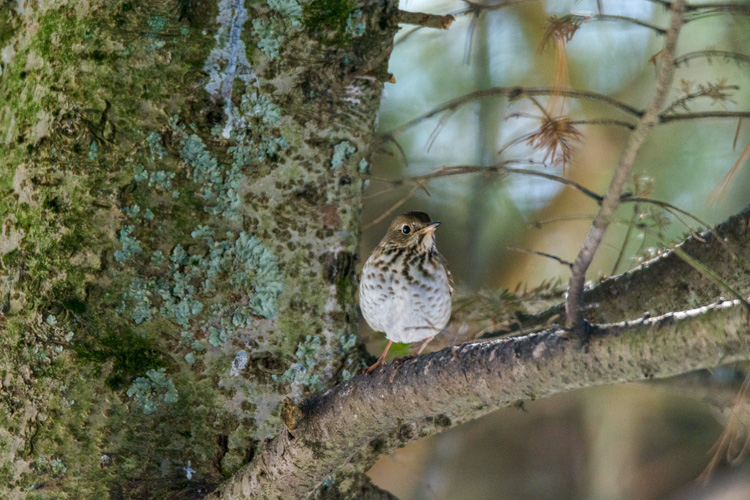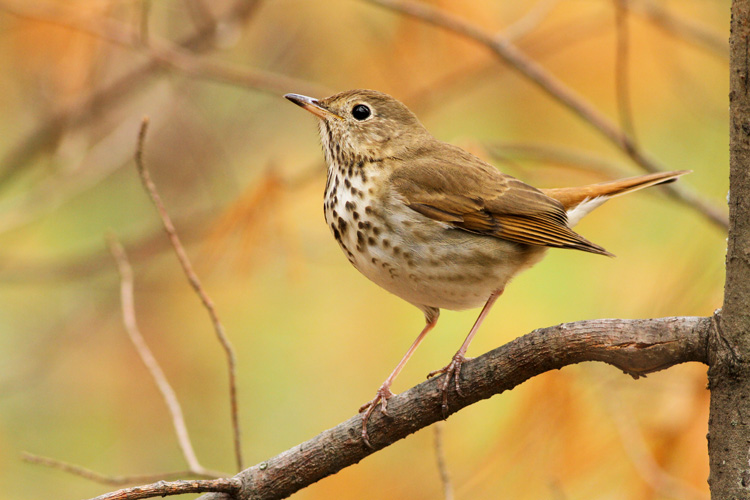If you enjoy watching birds at feeders, there’s a good chance you have a soft spot for these little darlings of the winter bird feeder crowd: Dark-eyed Juncos.
Although there are juncos to be found in Massachusetts year-round, these “snowbirds” are most recognizable hopping around on the ground or in the snow beneath seed feeders, often in small flocks. These ground-feeding sparrows love to snap up fallen seeds in their cone-shaped pink bills, which contrast sharply with their dark grey or brown upper plumage. Their white outer tail feathers will flash into view when they take flight.
Many juncos spend the breeding season to the North of us, across much of Canada, flying south and spreading out across North America the rest of the year, although some will stay year-round and retreat to the woods or higher elevations as the weather warms.
Enjoy these five photos of Dark-eyed Juncos from our annual Picture This: Your Great Outdoors photo contest and look for them on your next winter walk in the woods!
